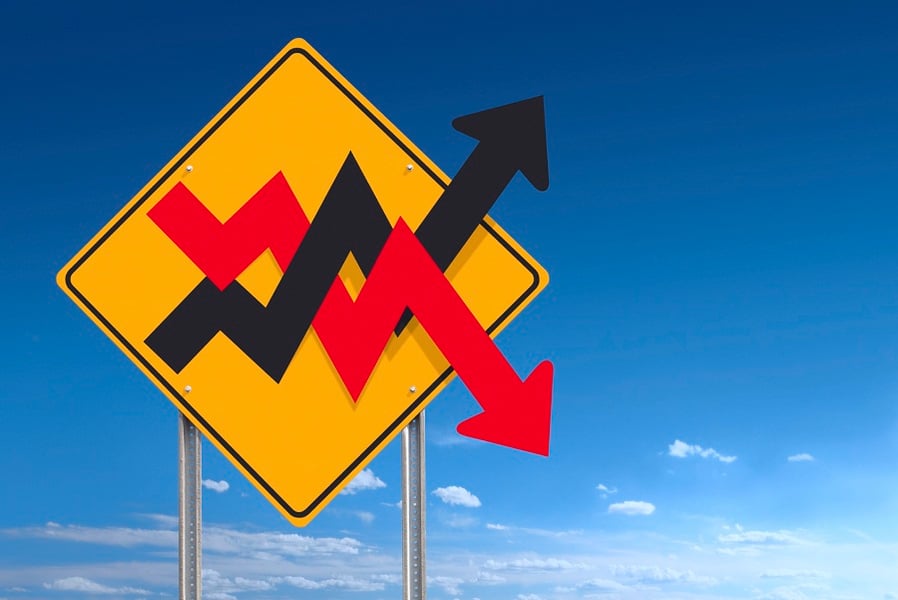With equities hovering near record highs, there are vastly different ways of interpreting where the market is headed.
On one end of the spectrum are investors who believe that now is a perfect time to invest. In their eyes, the economy is on the mend, business is good and everything has aligned. On the opposite end are investors who argue that the higher the market climbs, the closer it is to the next sell-off. Their thinking is that the market operates in cycles and indicators are increasingly predicting the next drop.
What's particularly interesting is that the last decade or so has provided mental fodder for both of these viewpoints. The past few years have been extremely fruitful for equity investors, with double-digit returns in the wake of 2008. So that first group of investors might look back at their performance over the past few years and expect it to continue going forward. On the other hand, the second group, fearful of market drops, looks at 2008 as the prototypical example of things going horribly wrong.
YOUR JOB
Regardless of your short-term view on the market, it is your job as a financial adviser to understand these two very different thought processes. When it comes down to it, both are representative of cognitive biases exhibited by investors of all levels, which can stand in the way of financial success.
I am, of course, alluding to behavioral finance, a field that combines traditional finance and economics with behavioral and cognitive psychology. I find that understanding some of the tricky ways in which our brains work can us help make better investing decisions.
(More: Why do investors make the wrong moves at the wrong times?)
For example, in the case of an extended period of market drawdown, some behaviors will likely need to be addressed or even corrected, if possible. By the same token, constant fear of market correction can be equally dangerous. Either way, your clients have entrusted you with their financial success, and sometimes that means dealing with their emotional reactions and behavioral habits.
Here are a few types of behavior that people sometimes exhibit during stressful market conditions. Each case is different, of course, so use your best judgment to figure out the right approach for your clients.
OVERCONFIDENCE
Based on their past experiences, their perception of themselves or even their confidence in you as an adviser/investor, some clients may have unrealistic expectations for the future. While things are going well today, no one can predict tomorrow's market performance with any great certainty. This is a particularly salient issue as domestic equity markets continue to rise. It is therefore important to educate your clients on market cycles and what to expect over the long haul. It's not unusual for a long-term investor to weather several major market crises in his or her lifetime, and it may be good to remind them that even the sharpest Wall Street investors have periods of poor performance.
ANCHORING EFFECT
Some clients may look back at the past five years and see an average return of 15% or more. This can cause them to evaluate every return going forward in relation to that 15%, which becomes an anchor. This “anchoring effect” is likely a product of the human need to attach simple, concrete meaning to complex situations.
(More: When underperforming the S&P 500 is a good thing)
To counter this type of thinking, it may help to present your client with a number of perspectives to consider. For example, rather than giving a desired outcome or single number when discussing performance, it can be helpful to give a range or the “low end” of desired outcomes. Likewise, rather than focusing solely on the absolute return of a particular stock in the portfolio, it's helpful to discuss various metrics for the security and explain its intended role in the overall portfolio to give a more rounded view of the situation.
CONFIRMATION BIAS
Sometimes, clients may view a period of poor performance as a confirmation of their deeply held fears or beliefs. Let's say you have a client who vividly remembers taking losses in 2008 and is fearful of the same happening in the future. For this client, when news comes out and the market dips 1.5% in response, it can seem like a sign of the end of the world. In other words, this client is looking for things that confirm his or her belief, and may even ignore good days when the market rises by the same amount. In these cases, it's important to remind the client that good and bad days happen, and that perhaps watching the daily moves of the market can be detrimental to the long-term investment mind-set.
OVERREACTION
This is an easy behavior for anyone to slip into, and it takes a great deal of discipline to correct. When disaster strikes (or at least perceived disaster), it's only natural to want to take some course of action. However, acting without reason can create big problems for your clients' portfolios. If they are dead set on selling securities and exiting positions, portfolio churn can rapidly eat away at their returns. In addition, your clients may suffer an opportunity cost once the market improves, as they lose out on the upside of the securities they sold.
(More: Take advantage of bond volatility)
Even professional investors struggle to keep their emotions in check during ambiguous or challenging market conditions. It's reasonable to expect that your clients will have just as difficult a time when the next market downturn occurs. That's why it's important to educate your clients, give them reasonable expectations for the future and help them understand some of the mental blocks that impede rational investing decisions. You can't unplug the news, but you can emphasize a long-term perspective and encourage them to keep their long-term goals and objectives top of mind.
Mike West is senior partner and chief executive of BPV Capital Management.







